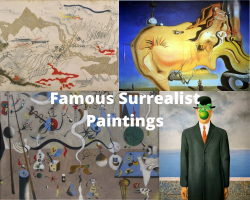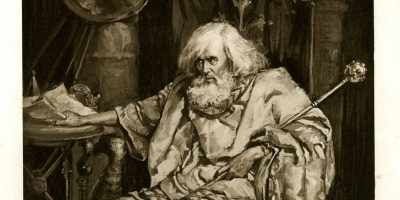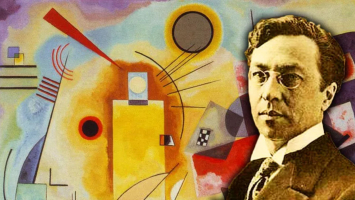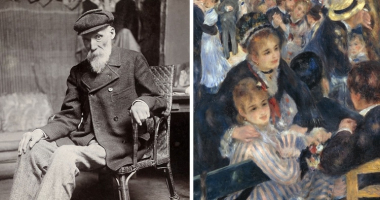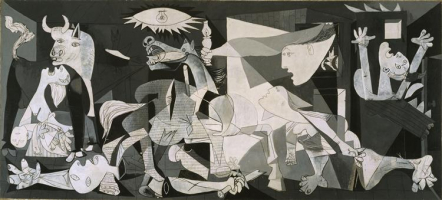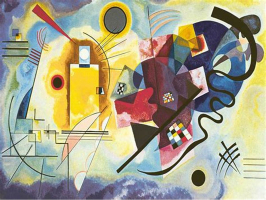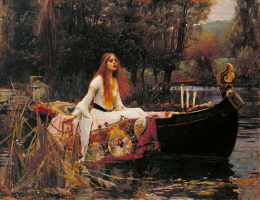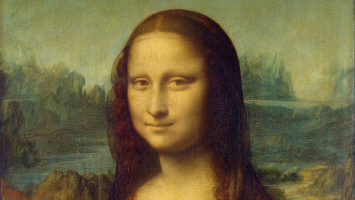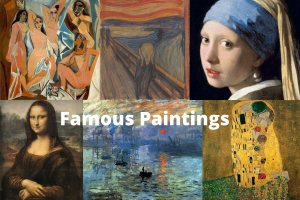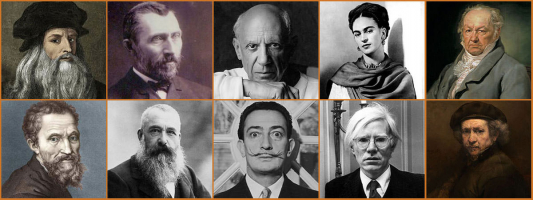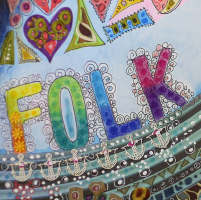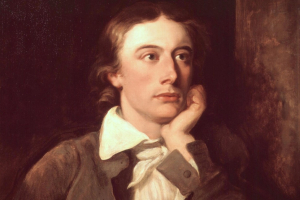Top 10 Most Famous Abstract Paintings by Renowned Artists
Many well-known works of Abstract art were produced in the early 20th century, and the majority of these pieces are still discussed today. Among these ... read more...instances of abstract art, some pieces have managed to stand out and become more and more well-liked throughout time. We have selected the top 10 Abstract paintings to discuss below, while there are many more works of art that may be considered when thinking about the most famous Abstract paintings by renowned artists of all time.
-
Wassily Kandinsky, a Russian artist, is widely regarded as the father of abstract art and the most recognizable representative of the entire movement. Kandinsky, known as the "founder of Abstract Art," created some of the genre's earliest paintings, including what is thought to be the first authentic piece of the Abstract Art movement. The in dispute piece was his Untitled (First Abstract Watercolor), painted in 1910.
With Untitled, Kandinsky demonstrated his desire to break free from the restrictions placed on including subject matter in artworks. This work showcased aspects and methods that were specific to the emerging genre of Abstract art. Kandinsky's paintings are characterized by vibrant colors and painterly smears, but the expression of strong emotions before a precise representation of reality.
Kandinsky finished this picture in just three days while using watercolors. Kandinsky did make several studies for this piece before starting the final composition, despite his hurry. Kandinsky's skillfully chosen colors, which he knew would accurately depict his emotions at the time, added to the speed that can be perceived in Untitled. Additionally enhancing and emphasizing the turmoil and hurry that are felt when seeing this picture are the lines and forms that were drawn.
The loose and ambiguous lines in this piece of art also make a strong case for abstraction, and at the time they attracted a lot of attention from other artists. Because anything even somewhat detached and unconstrained was acknowledged as a legitimate subject matter inside artworks at the time, Untitled is recognized as a key founder of the Abstract Art movement. Untitled signaled a turning point in European art as it moved away from traditional works of art and toward more abstract and unrestrained compositions.
It was widely agreed that Kandinsky's professional apex and the height of his finest artistic accomplishments occurred between 1910 and 1914. Untitled was thus among the first pieces of art to overtly reject all references to recognizably defined shapes and break free from the restrictions imposed by the representational traditions of Western European painting.
The majority of Kandinsky's work from this time period would go on to prominently depict this idea of perfect freedom.Artist: Wassily Kandinsky (1866 – 1944)
Date Painted: 1910
Medium: Watercolor and Indian ink and pencil on paper
Dimensions: 49.6 cm x 64.8 cm (19.5 in x 25.5 in)
Where It Is Currently Housed: Centre Georges Pompidou, Paris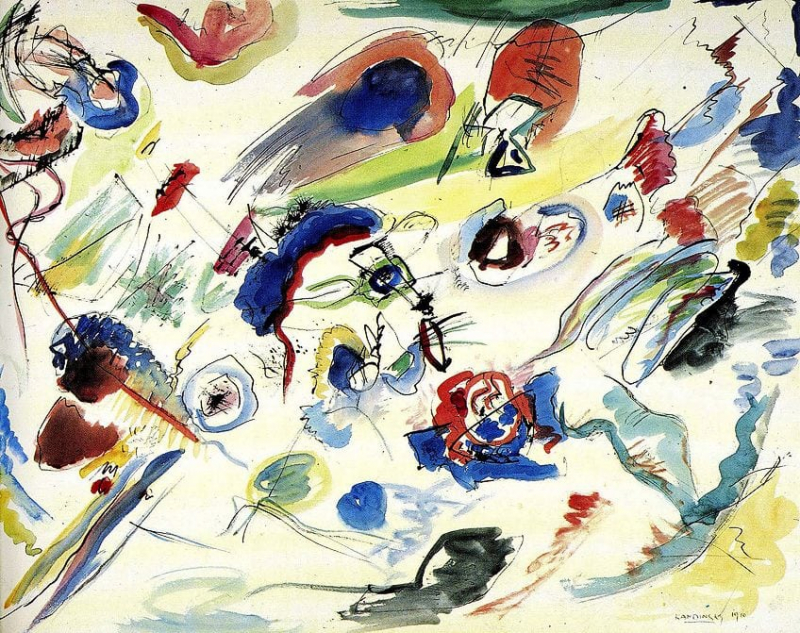
Untitled (First Abstract Watercolor) (1913) by Wassily Kandinsky; Wassily Kandinsky, Public domain, via Wikimedia Commons Music Art Gallery -
Another significant contributor to the Abstract Art movement was the renowned Dutch artist Piet Mondrian, who produced some of the genre's most recognizable and well-known works of abstract art. Mondrian's art style underwent a substantial amount of development before being reduced to simple and uncomplicated geometric components. He is most known for his role in the Abstract and De Stijl movements. One of Mondrian's most well-known Abstract works and a good example of his technique is his 1921 painting Tableau I.
Mondrian succeeded to establish his well-known style within Abstract Art by producing a picture that used solid black lines to divide panels of paint. The majority of Mondrian's works during this time period were distinguished by this polished and harmonic balance that was established by the mathematical accuracy applied to compositions, as he relied on hard and geometric shapes to replace recognized people.
Additionally, Mondrian used monolithic blocks of color and line to underline that his works never made any kind of clear reference to anything. Tableau I's use of lines and color helped achieve the strong segregation that Mondrian aimed to achieve between viewers' brains and this abstract piece of art.As some works can be comprehended and accepted as simple blocks of color, line, and form, this was done to emphasize the idea that logical sense did not necessarily accompany artworks.
Mondrian mainly used basic colors in this time period, as shown in Tableau I and other pieces of art. His minimalist color scheme further demonstrated his utopian belief that the universe was essentially a collection of organically occurring components that could be readily blended into geometric shapes and lines.
As seen in Tableau I, Mondrian was able to smoothly create a sense of compositional harmony within his abstracted works by making reference to the fundamental components of all colors by employing just basic colors. Tableau I, an abstract painting by Mondrian in which he attained a nearly perfect color balance, later influenced a wide range of pop and contemporary painters as well as architects and fashion designers.
Artist: Piet Mondrian (1872 – 1944)
Date Painted: 1921
Medium: Oil on canvas
Dimensions: 103 cm x 100 cm (40.5 in x 39.3 in)
Where It Is Currently Housed: Kunstmuseum Den Haag, the Netherlands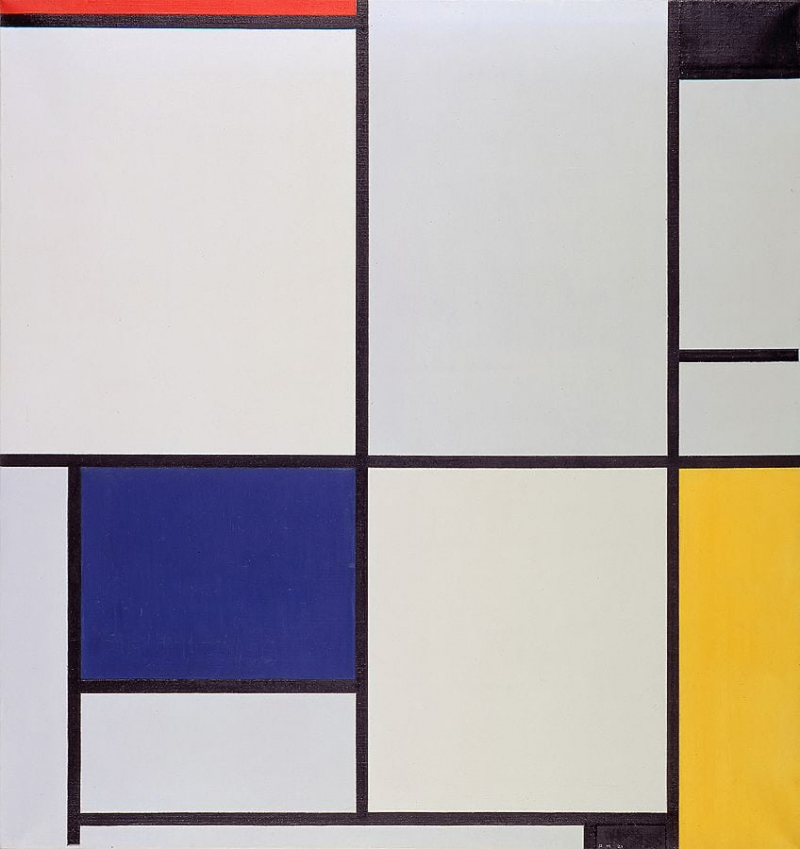
Tableau I (1921) by Piet Mondrian; Piet Mondrian, Public domain, via Wikimedia Commons 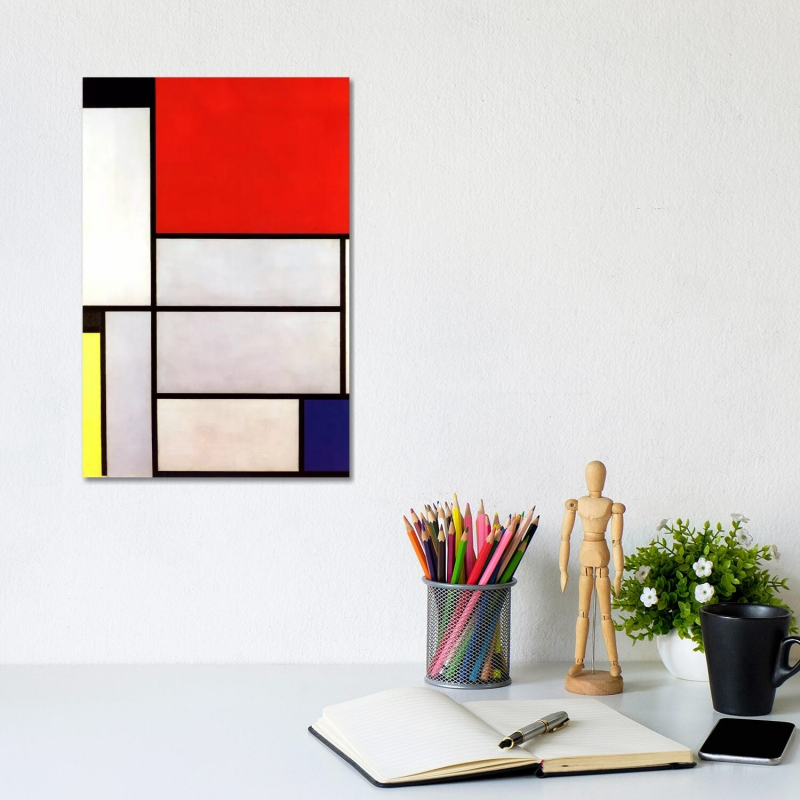
Overstock.com -
Paul Klee, a German artist who became well-known during the Abstract Art movement, produced some of the best examples of the movement in history. In addition, Klee was associated with Expressionism, Cubism, and Surrealism, and the majority of his paintings exhibit an excellent understanding of color theory. Senecio, his most well-known abstract painting, was created in 1922.
Klee depicts what looks to be a human head that has been divided into several rectangles of orange, yellow, red, and white in Senecio, also known as Head of a Man Going Senile. The title's allusion to artist-performer Senecio further suggests that the various colored squares mimic the type of mask or patches typically worn by a harlequin.
Senecio initially appears to not represent a face because of the abstraction the many squares produce. However, while focusing on the triangle and curved line above both eyes, viewers can see a face within the blocks because it appears to have raised eyebrows. The artwork is seen as belonging to both Cubism and Abstract Art because of the geometric perfection it displays, which shows a significant amount of Cubist influence.
Klee was able to modify graphic components to the point that they could take on the appearance of a fairly recognized figure in the eyes of viewers by employing straightforward colors and ambiguous shapes. Due to the mask-like appearance of the face, Senecio also reflects Klee's sense of humor and interest in African culture.
Senecio's use of color, shape, and illusion illustrates the fluid nature of the link between art and society at the period because the face Klee represented might easily take on a different form if viewers interpreted it in a different way. Senecio makes fun of children's paintings in addition to this theoretical idea because Klee's intended figure can still be seen despite the use of hazy contours and sparse facial characteristics, which are typical of children's artwork.
Artist: Paul Klee (1879 – 1940)
Date Painted: 1922
Medium: Oil on canvas mounted on a panel
Dimensions: 40.5 cm x 38 cm (15.9 in x 15 in)
Where It Is Currently Housed: Kunstmuseum Basel, Switzerland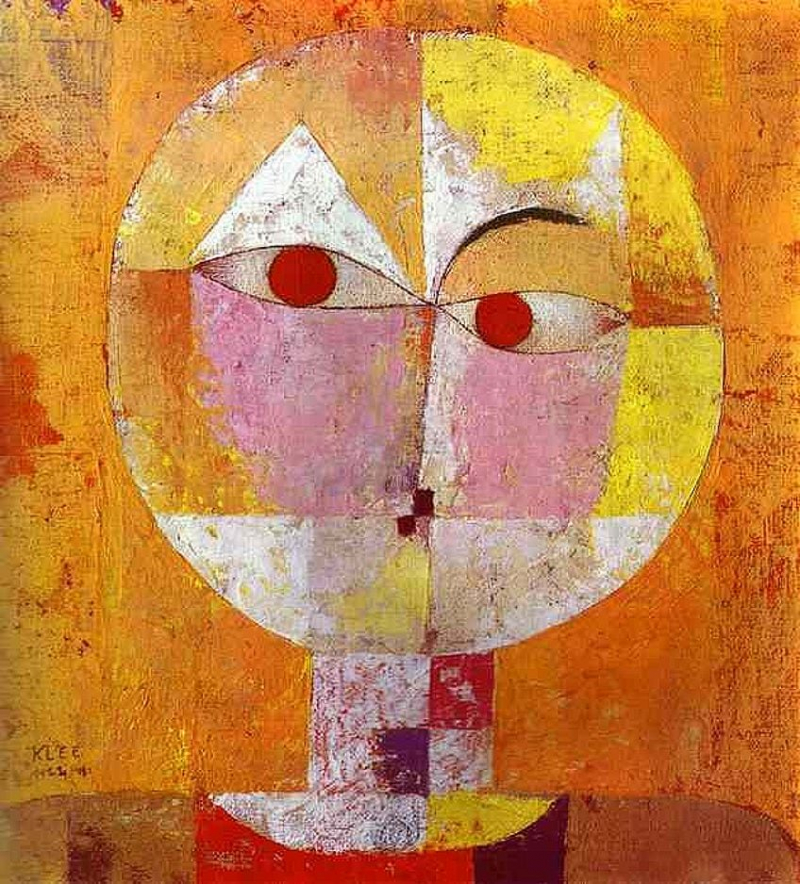
Senecio (Head of a Man) (1922) by Paul Klee; Paul Klee, Public domain, via Wikimedia Commons 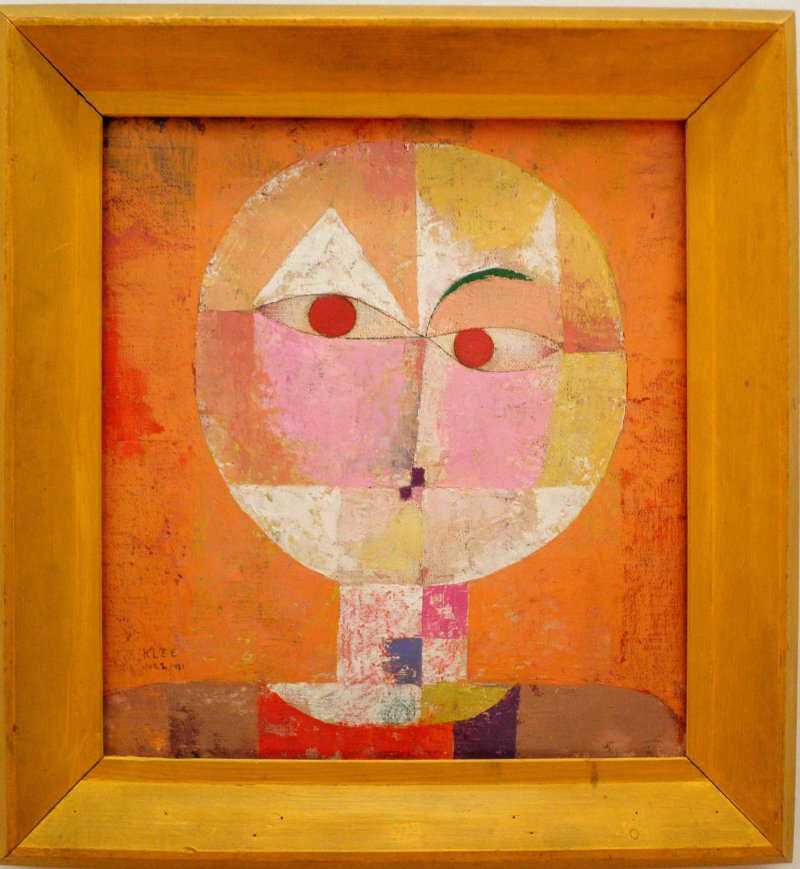
Arthive -
During his career, the Spanish artist Joan Miró, who mostly worked in the Dada, Experimental, and Surrealist movements, also created a number of well-known Abstract paintings. Despite having a stronger connection to surrealism, Miró created a number of well-known pieces that were thought to have influenced the emergence of abstract painting. His Peinture (Etoile Bleue) was one of these paintings, painted in 1927.
This piece of art is fascinating since it shows Miró's journey from figurative to abstract art. It takes a while to figure out what the painting's genuine subject matter is. However, most viewers will comment that they might still not fully grasp what Miró is attempting to portray after watching it for a few minutes.
The two patches of bright blue and red, as well as the thin black lines that appear to be doodling, become more visible against the blazing blue background. A pink splotch may be seen in the painting's center, sandwiched between its spiraling black lines. The fact that no clear images or recognizable figures can emerge despite the confluence of lines and color flecks shows how truly abstract this piece of art is.
Miró was able to produce an outstanding image of visual intensity in Peinture (Etoile Bleue), with this artwork taking on a surreal quality. This painting's intense blue was described by Miró as the "color of [his] dreams," underscoring the phantasmagorical and surreal impression that can be experienced when looking at it. According to Miró, he simply painted the images he saw in his thoughts as he was painting.
This comment underscored the fact that, because the subject matter he painted was chosen from his own imagination, physically recognizable references could not always be identified within his paintings. Miró frequently painted while having hallucinations and using drugs. He was a Surrealist artist. Thus, Peinture (Etoile Bleue), while existing as a well-known work of Abstract art in and of itself, is a result of Miró's irrational method of producing art.
Other Abstract painters like Mark Rothko and Yves Klein were influenced by Miró's use of color, particularly the vivid blue. In addition to having a significant impact, Miró's Peinture (Etoile Bleue), which sold for £23.5 million in 2012, went on to become his most expensive painting ever.Artist: Joan Miró (1893 – 1983)
Date Painted: 1927
Medium: Oil on canvas
Dimensions: 115.5 cm x 89 cm (45 5/8 in x 35 in)
Where It Is Currently Housed: Private collection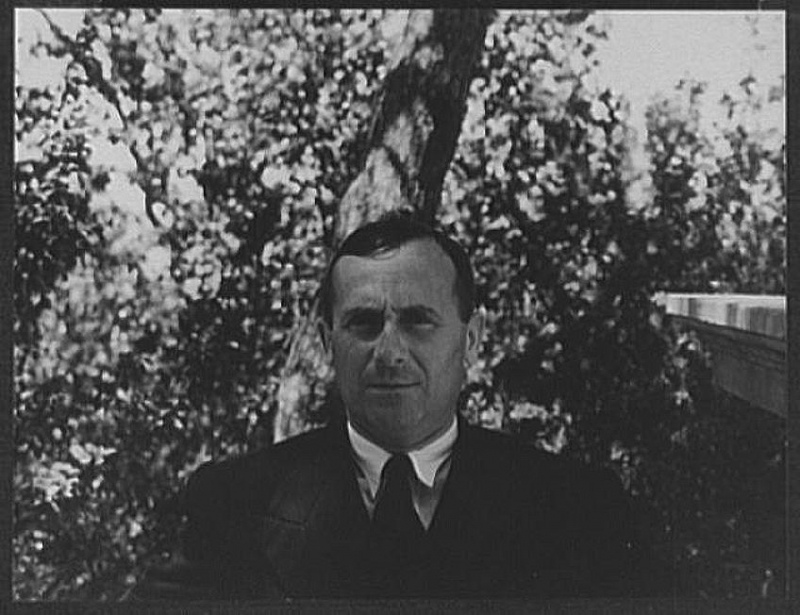
Portrait of Joan Miró in 1935; Carl Van Vechten, Public domain, via Wikimedia Commons 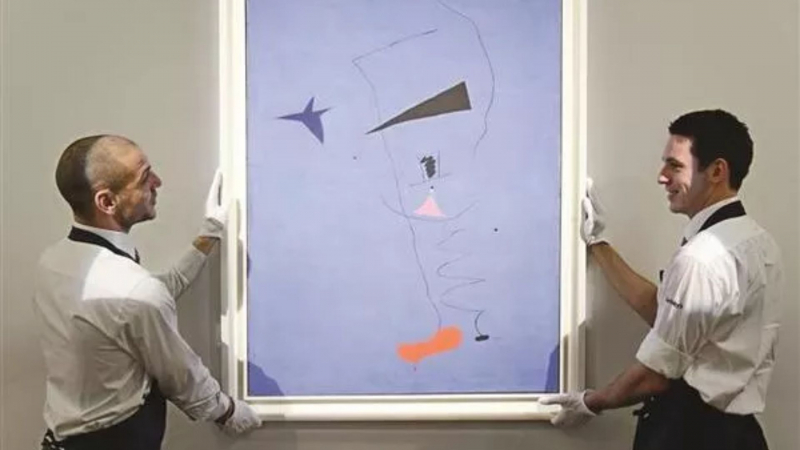
Hürriyet Daily News -
Pablo Picasso, a Spanish painter, is one of the most well-known artists in art history overall. Picasso experimented mostly with the Cubist and Surrealist movements during the course of his long career. He also produced some pieces of art that were seen as belonging to the Abstract Art movement. Nude, Green Leaves and Bust, painted in 1932, is regarded as one of his best abstract art paintings among all of his creations.
Picasso depicted Marie-Thérèse Walter, his mistress at the time, in Nude, Green Leaves, and Bust. This portrait of Walter is dedicated to her and the enormous influence she had on Picasso. Picasso saw Walter as his muse. This abstract piece of art is over a meter tall and has a depiction of Walters as a slightly stylized and abstracted person reclining in front of a vivid blue curtain. She appears surrounded by what appear to be unrelated items, such as a plant, a bust perched atop a pedestal, and some fruit.
Picasso and Walters had a sensual relationship, which was well captured in this magnificent work of art. The abstracted figure in the painting and the use of a curtain suggest an air of mystery and privacy, which he maintained their relationship a secret from his wife for years. Picasso was able to further obscure Walters' identity by painting her in this manner, in addition to producing a form that was at first difficult for spectators to comprehend logically.
Due to the methods and components employed by Picasso to create Nude, Green Leaves, and Bust, it is regarded as a prominent example of abstract art. The figure's face is hidden, which emphasizes this, as does the confusion that surrounds the objects that are visible.
The use of primary colors in the background indicates the compositional harmony that was achieved through their employment and alludes to the method popularized by fellow artist Piet Mondrian.Thus, Nude, Green Leaves, and Bust is recognized as a significant work of abstract art because Picasso skillfully incorporated aspects of several genres into its distinctive composition. When it was sold at auction for $106.5 million in 2010, it also shattered the previous record for the most expensive painting ever sold. As of right now, Nude, Green Leaves, and Bust are the works of art with the third-highest auction price ever.
Artist: Pablo Picasso (1881 – 1973)
Date Painted: 1932
Medium: Oil on canvas
Dimensions: 162 cm x 130 cm (64 in x 51 in)
Where It Is Currently Housed: Currently on long-term loan to the Tate Modern, England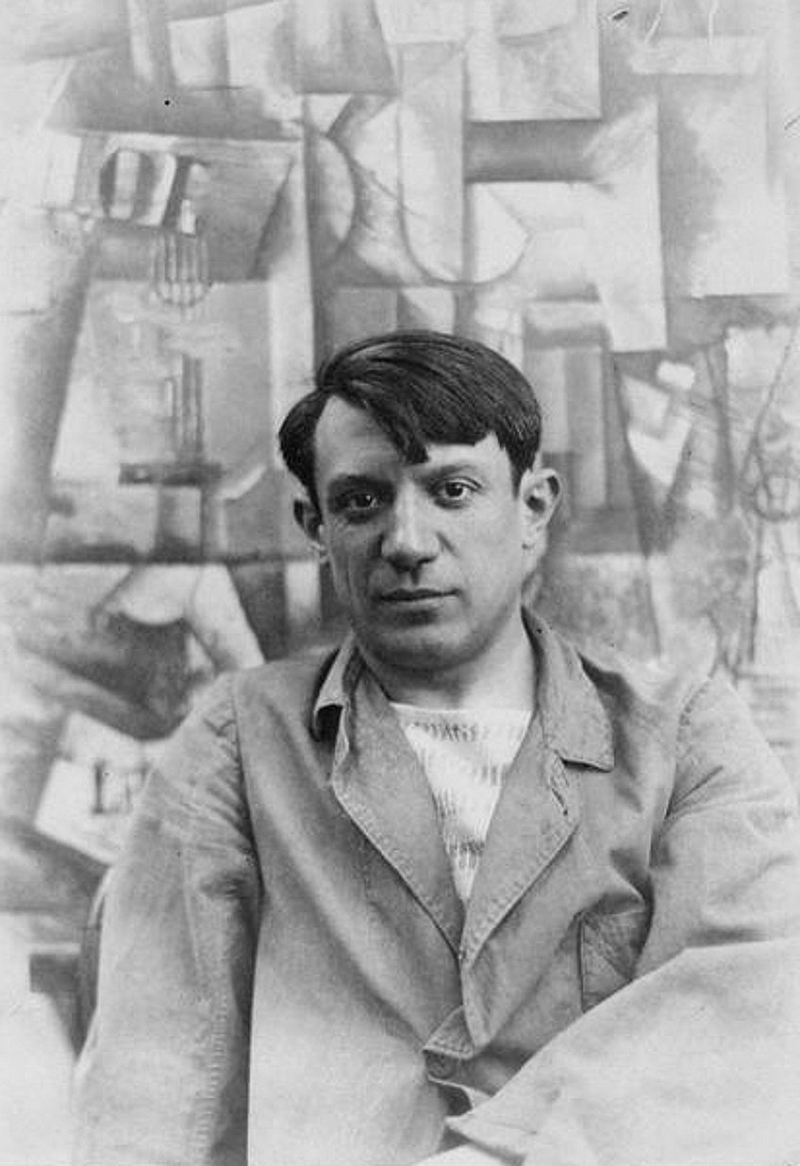
Portrait photograph of Pablo Picasso in front of his painting The Aficionado (Kunstmuseum Basel) at Villa les Clochettes, Sorgues, France, summer 1912; Anonymous Unknown author, Public domain, via Wikimedia Commons Facts TV -
Ben Nicholson, a British artist, was another well-known figure during the Abstract Art movement. The works of Nicholson, who only created abstract compositions, landscapes, and still lifes, have been cited as important examples of Abstract Art. Nicholson's 1934 (relief) artwork is one of his works of art from that year.
Nicholson was fascinated by the idea that paintings could be able to depict space and was greatly influenced by the Post-Impressionist and Cubist movements. He started to stray from his customarily representational technique in order to experiment and create what he thought to be abstract reliefs. Nicholson handcrafted each component of these geometrically and abstractly sculpted works of art before coating them in white.
Nicholson was highly impressed by Piet Mondrian's artwork in 1934 (relief) after meeting him and his fellow painters Joan Miró and Alexander Calder. Nicholson avoided using color in this abstract painting by sticking with the color white. The wide abstraction and lack of color in 1934 (relief), which was created in the years before World War Two started, served as a subtle investigation of the difficult time experienced between the two wars.
Nicholson illustrated the concept of "lacking" in the society of the time by cutting out a circle and a square from a wooden board. Through the use of geometric forms, layered layering, and a monochromatic color scheme, 1934 (relief) eliminates all feelings.
Nicholson went on to produce a number of these abstract white sculptural reliefs in this distinctive style, cementing his position as one of the most significant characters in English Abstraction at the time.Artist: Ben Nicholson (1894 – 1982)
Date Painted: 1934
Medium: Oil paint on mahogany
Dimensions: 71.8 cm x 96.5 cm
Where It Is Currently Housed: Tate Modern, England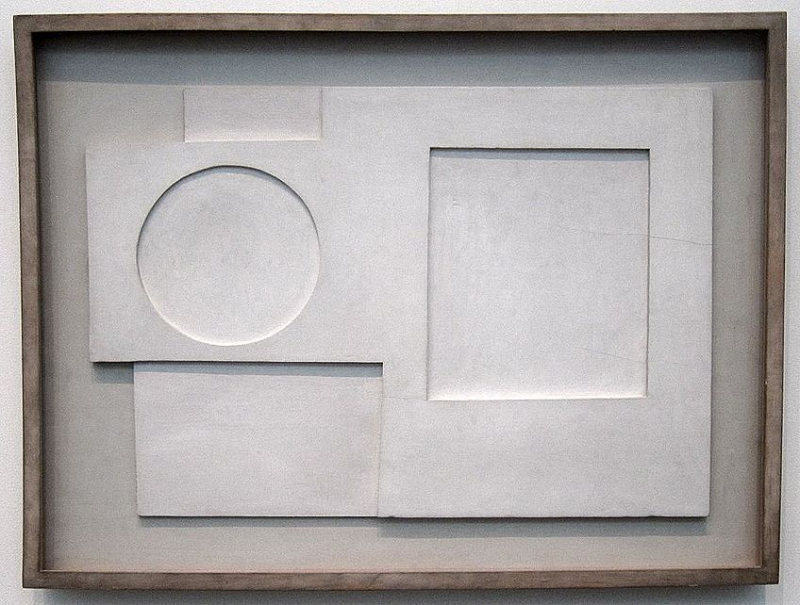
1934 (relief) oil paint on wood sculpture by Ben Nicholson, 1934, Tate Modern; sculpture: en:Ben Nicholson (d 1982); photo: Wmpearl, CC0, via Wikimedia Commons 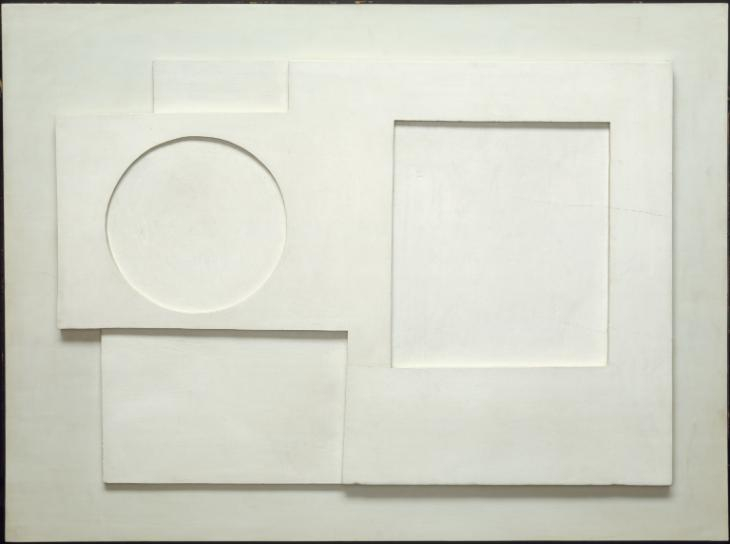
Tate -
Jackson Pollock, an American painter, was a prominent member of the Abstract Expressionist movement. Being regarded as a key figure in that movement, Pollock produced an amazing 363 paintings while he was still alive, many of which are considered to be classic examples of Abstract art. Convergence, one of his finest abstract paintings, was produced in 1952.
Convergence is regarded as Pollock's most admired and valiant painting ever, in addition to being one of his early abstract pieces. Convergence, a work by Jackson Pollock known for his iconic drip-painting method, is an example of this style since it shows a collage of splattered colors that appear to form perfectly crafted forms and lines. Due to Convergence's enormous size, which is a lot to take in, these aspects are able to simultaneously strike the eye and elicit from viewers some rather intense feelings.
Little traces of life can be visible on Pollock's surface in Convergence. Along with nails and coins, he also put a small match, which is visible in the artwork's center. Pollock began this painting with a monochromatic color scheme but was dissatisfied with the outcome and decided to add some color to save the Abstract artwork. While some reviewers may have first questioned whether Pollock's use of color was successful in saving the piece, Convergence is one of the artist's most well-known pieces today.
The audacity of Convergence nearly dares viewers to disagree with its message because it represents both free speech and freedom of expression. Through its own writing style, Convergence was able to convey its views on the menace of Communism and the Russian Cold War.
As a result, it is regarded as a significant and innovative painting in history because Pollock's message encapsulated everything that America stood for at the time.Convergence is best experienced in person due to its enormous magnitude. Convergence was the subject of a 340-piece jigsaw puzzle that was created by a puzzle business in 1964 due to its popularity and was marketed as "the world's most difficult puzzle" at the time. Numerous Americans flocked to buy the puzzle as a result of this marketing, which increased Pollock's stature in the art world and the influence of Convergence on society.
Artist: Jackson Pollock (1912 – 1956)
Date Painted: 1952
Medium: Oil on canvas
Dimensions: 237 cm x 390 cm (93.5 in x 155 in)
Where It Is Currently Housed: Albright-Knox Art Gallery, New York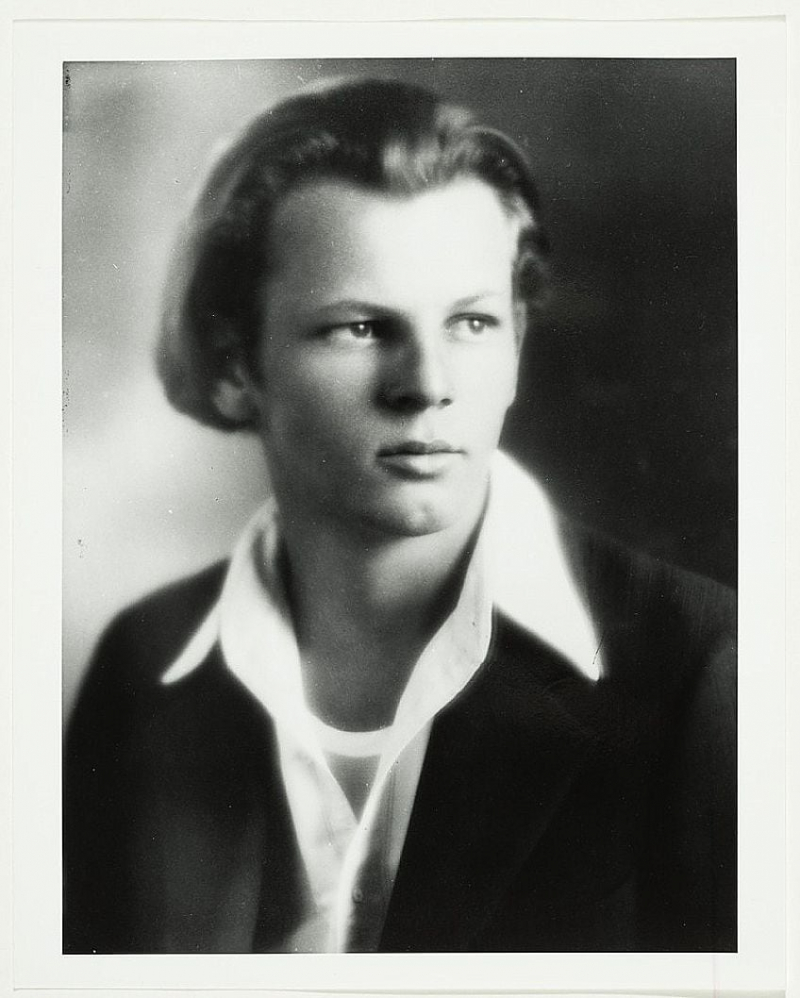
Portrait of Jackson Pollock in 1928; Smithsonian American Art Museum, Public domain, via Wikimedia Commons INVIN ART -
American painter Helen Frankenthaler was a significant female figure in the Abstract Art movement and one of the few artists to work through numerous generations of Abstract painters. Her works of abstract art changed frequently, displaying her evolving style at the time. Mountains and Sea, one of her most well-known abstract paintings, was created in 1952 when she was just 23 years old.
By thinning her oil paints with turpentine or kerosene before using them to stain the unprimed canvas, Frankenthaler's distinctive soak-stain method, for which she was lauded, was showcased in this piece of art. As a result, the paint was absorbed by the blank canvas, giving her artwork a sensation of continuous movement. Frankenthaler was motivated to establish her own unique approach in the artworks she produced after seeing some of Jackson Pollock's monochromatic drip paintings in 1951, which resulted in the development of soak-staining.
After visiting Nova Scotia, Frankenthaler was moved by the natural beauty to try out her new approach. Mountains and Sea included an almost transparent representation of abstracted objects that were supposed to be mountains, giving her work an elusive quality. Frankenthaler's paintings took on organic forms that suggested tremendous tranquillity thanks to her soak-stain process, and their heavenly and ephemeral quality was furthered by the use of a light and pastel color scheme.
Mountains and Sea is regarded as one of the earliest successful Color Field Paintings to exist inside Abstract Expressionism and has remained one of the movement's most alluring images to this day based on Frankenthaler's method. Numerous painters who experimented with the abstract art movement were influenced by Frankenthaler's famous works because of her light, flowing approach, which permitted a smooth transition away from the impasto trend that was prevalent at the time.
Mountains and Sea was the first abstract piece of Frankenthaler's career to be formally shown. Additionally, one of her largest paintings to date is included in her artwork. Mountains and Sea's enormous size allowed it to portray a peaceful closeness that Frankenthaler felt when visiting Nova Scotia, and the watery figures and shapes she painted were given a bright yet transparent look by the delicate pink, blue, and green hues she used.
Her images essentially floated off the canvas thanks to their scale and the colors she chose.Artist: Helen Frankenthaler (1928 – 2011)
Date Painted: 1952
Medium: Oil and charcoal on canvas
Dimensions: 220 cm x 297.8 cm (87 in x 117.2 in)
Where It Is Currently Housed: National Gallery of Art, Washington D.C.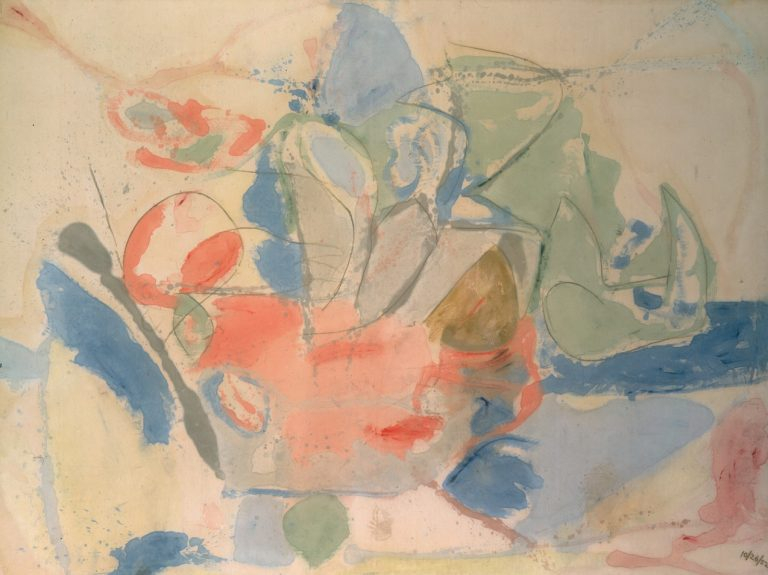
After 'Mountains and Sea': Frankenthaler 1956–1959 | Guggenheim Museum Bilbao Apollon Engine -
Russian-American artist Mark Rothko is regarded as a significant pioneer of Color Field Painting within the category of Abstract Art. Due to a remarkable lack of subject matter in the majority of his paintings, Rothko's works are notable examples of Abstract Art and are most known for their vibrant use of color. Rothko's No. 2, Green, Red, and Blue, one of his well-known works, was created in 1953.
The manifestation of color is the principal subject of Painting No. 2, Green, Red, and Blue. The vivid shades of red, green, and blue represent lighter energy, and Rothko's choice of colors properly reflects the emotional condition he was experiencing at the moment. But as his career developed, it was claimed that Rothko's mental health began to deteriorate rapidly, which caused him to use darker hues in his paintings, like black, gray, and blue. The piece of art known as No. 2, Green, Red, and Blue served as a bridge between his light and dark phases.
Rothko is able to evoke strong feelings in his Abstract Art paintings through the thoughtful use of color.The red stripe in the center of this painting sharply contrasts with the blue block and unites with the green area of the piece. According to Rothko, the use of color can evoke a range of various interpretations in viewers when they study his artworks since it can delve into fundamental human emotions. No. 2, Green, Red, and Blue were chosen because they were supposed to represent a calmer period in his life.
Artist: Mark Rothko (1903 – 1970)
Date Painted: 1953
Medium: Oil on canvas
Dimensions: 205.7 cm x 170.5 cm (81 in x 67.1 in)
Where It Is Currently Housed: Private collection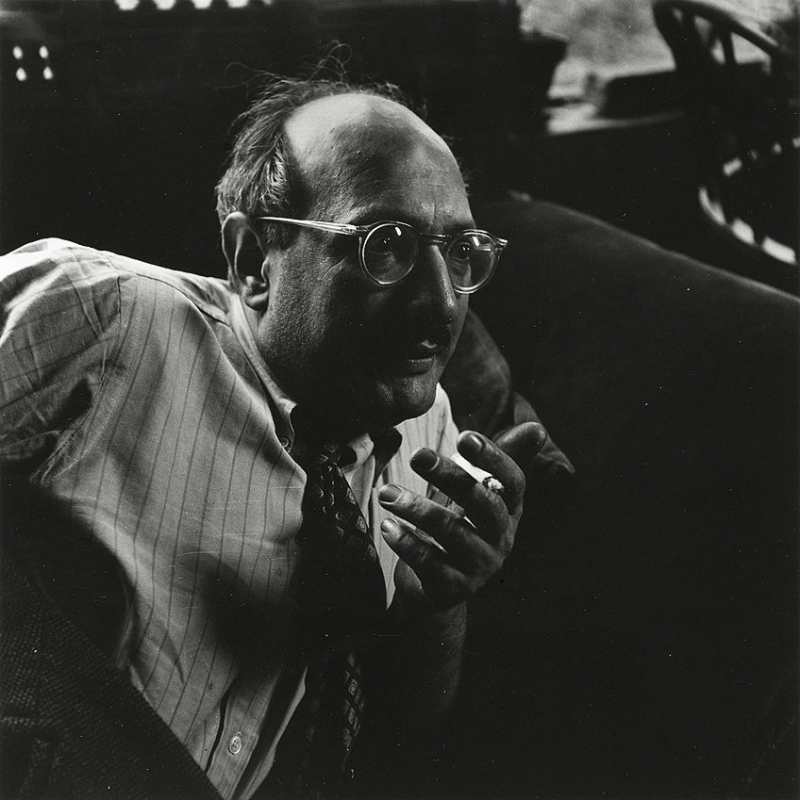
Mark Rothko, Yorktown Heights, ca. Năm 1949; Consuelo Kanaga , Không hạn chế, qua Wikimedia Commons 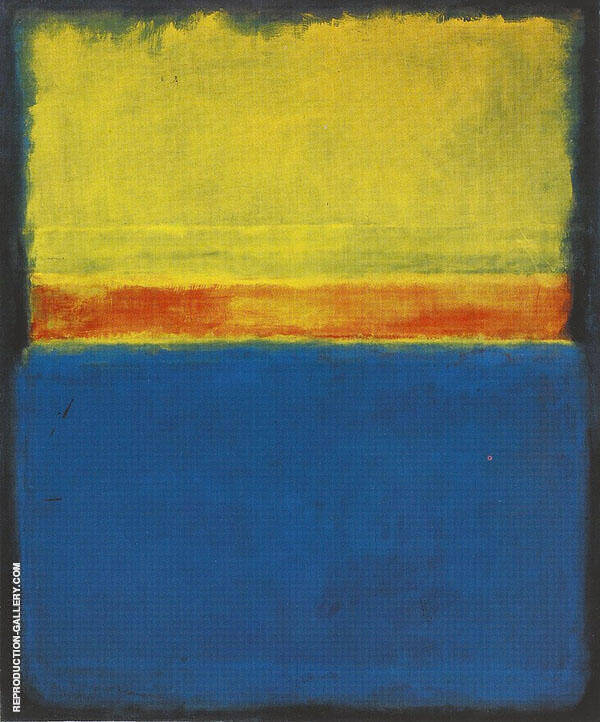
IDeATe Gallery Digital Reproduction -
Robert Motherwell, an American painter who was well-known throughout the Abstract Expressionist movement, is the last painter on our list. Motherwell was regarded as the most articulate artist in the movement since his Abstract pieces addressed a wide range of important political, philosophical, and literary topics. Elegy to the Spanish Republic No. 110 is the name of one of his well-known abstract paintings from 1971.
Motherwell is credited with shaking up the world of abstraction with this piece of art because it features extremely primitive and rough gestures that simultaneously communicate feelings of strength, energy, and worry. This painting's austere use of black and white suggested a profound grasp of life and death, which gave it a stoic quality.
The 1936 outbreak of the Spanish Civil War is the subject matter on which this picture is thought to be based.
Motherwell was only 21 years old when he observed the atrocities, but they would have a lasting impact on him in the years to come. As a result, when someone looks at his painting, the intensity in it evokes strong, deep feelings. Motherwell also produced a series of more than 200 other paintings in response to the Spanish Civil War, in addition to this one.The degree of abstraction used by Motherwell in this piece was increased by the impression of unadulterated freedom it conveys. This abstraction functioned as a monument to human suffering and the never-ending cycle of life and death in Elegy to the Spanish Republic No. 110.
Elegy to the Spanish Republic No. 110's expressive and primitive brushstrokes appear to explode off the canvas, surrounding spectators with a ferocious form of energy. In addition to the painting's startling liveliness, Motherwell's work exhibits an odd sense of uneasiness. Motherwell injected vivacious new life energy into Abstraction at a time when it appeared to be dying, and this life force has continued to inspire Abstract artists to this day.
A significant impact on the direction of artistic production was held by abstract art. During this time, some of the most well-known Abstract artworks in the world were produced, and they are still highly regarded today. Although we have just chosen ten of the best examples of Abstract Art, if you have enjoyed learning about these outstanding and one-of-a-kind works of art, we strongly advise you to look into this genre further.
Artist: Robert Motherwell (1915 – 1991)
Date Printed: 1971
Medium: Acrylic with graphite and charcoal on canvas
Dimensions: 208.3 cm x 289.6 cm (82 in x 114 in)
Where It Is Currently Housed: Solomon R. Guggenheim Museum, New YorkSmarthistory 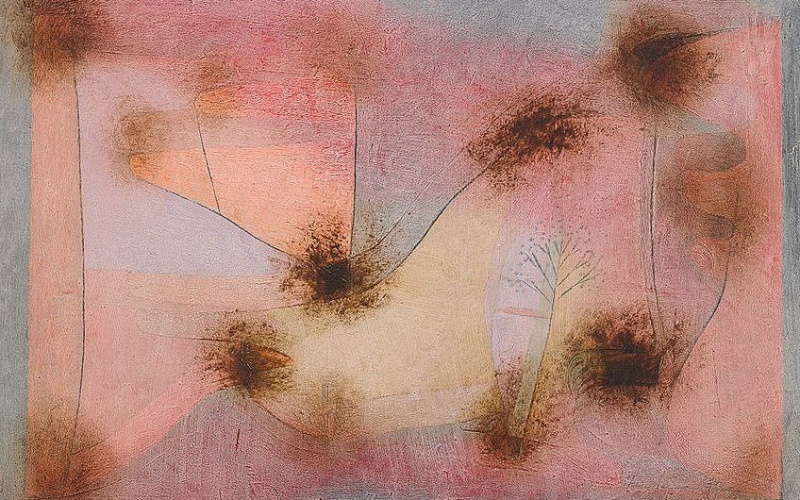
Hardy Plants (1934) by Paul Klee, oil on pulpboard; Paul Klee, Public domain, via Wikimedia Commons












